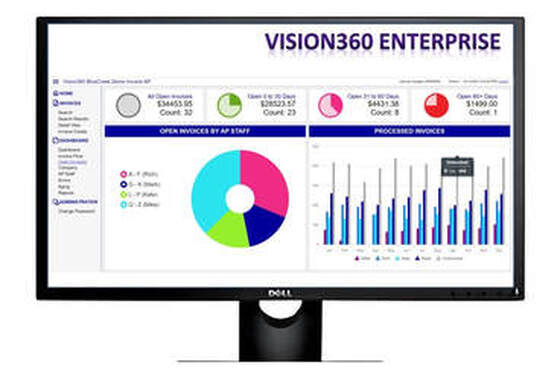Find Helpful Accounts Payable Automation Information

Understanding Accounts Payable: The Cornerstone of Business Finance
Accounts payable (AP) is a critical component of a company's financial operations and a key element in maintaining healthy financial management. In essence, accounts payable represents the money a business owes to its suppliers or creditors for goods and services received but not yet paid for. In this article, we'll explore what accounts payable is, its significance, the processes involved, and how it impacts a company's financial health.
Accounts payable (AP) is a critical component of a company's financial operations and a key element in maintaining healthy financial management. In essence, accounts payable represents the money a business owes to its suppliers or creditors for goods and services received but not yet paid for. In this article, we'll explore what accounts payable is, its significance, the processes involved, and how it impacts a company's financial health.
|
Table of Contents
1. Introduction to Accounts Payable Accounts payable, often abbreviated as AP, represents a company's outstanding liabilities or obligations to its suppliers and creditors. These obligations arise when a company receives goods or services on credit, meaning they are delivered before payment is made. The key elements of accounts payable include invoices from suppliers, purchase orders (POs), and other financial documents that document the terms and conditions of these transactions. |
|
|
2. The Significance of Accounts Payable
Accounts payable is significant for several reasons:
The management of accounts payable involves several essential processes that ensure the smooth flow of transactions and the fulfillment of financial obligations:
Accounts payable automation is a growing trend in the business world, driven by advancements in technology. Automation streamlines AP processes, reduces manual data entry, minimizes errors, enhances efficiency, and provides better visibility into financial operations. It often includes features such as electronic invoice processing, automatic data capture, workflow automation, and integrated payment options. Automation not only accelerates the AP process but also reduces the risk of late payments, late fees, and errors, ultimately leading to cost savings and improved financial management. 5. The Impact of Accounts Payable on Financial Health Effective management of accounts payable can significantly impact a company's financial health in several ways:
To ensure effective accounts payable management, consider the following best practices:
Accounts payable is a fundamental aspect of a company's financial management. Efficient AP processes impact cash flow, supplier relations, profit margins, and overall financial health. As technology continues to advance, automation is becoming increasingly important for optimizing AP operations. Businesses that prioritize effective accounts payable management stand to benefit from improved financial stability, profitability, and competitive advantage in today's dynamic business landscape. |
Additional articles:
Navigating Reluctance: Understanding Why Companies Hesitate to Implement Invoice Process Improvements The Power of Efficiency: Calculating Time and Cost Savings in the Accounts Payable Process with AP Automation Revolutionizing Efficiency: The Comprehensive Benefits of Implementing Accounts Payable Automation in Organizations The Costly Pitfalls of Manual Invoice Processing Why BlueCreek Software: A Game Changer for Efficiency with Vision360 Enterprise Maximizing Cost Savings: How CFOs Can Leverage Invoice Process Improvements A Day in the Life of an Payables Department: Unveiling the Essentials The Significance of Three-Way Purchase Orders: Enhancing Efficiency and Accuracy with AP Automation Vision360 Enterprise: Transforming Controllers' Roles and Why They Love It Revolutionizing Accounts Payable: The Power and Potential Concerns of AI Invoice Processing How AP Automation Transforms Finance at Every Level Getting Started: Steps to Streamline and Optimize the Entire AP Process Unlocking Efficiency and Savings: The Benefits of Invoice Optimization |